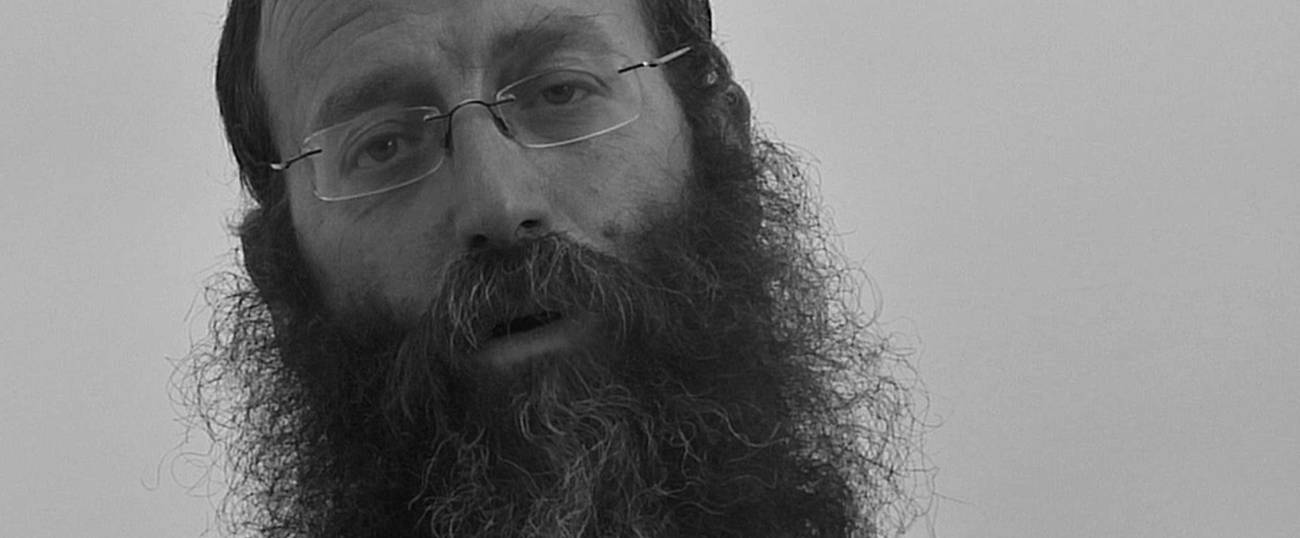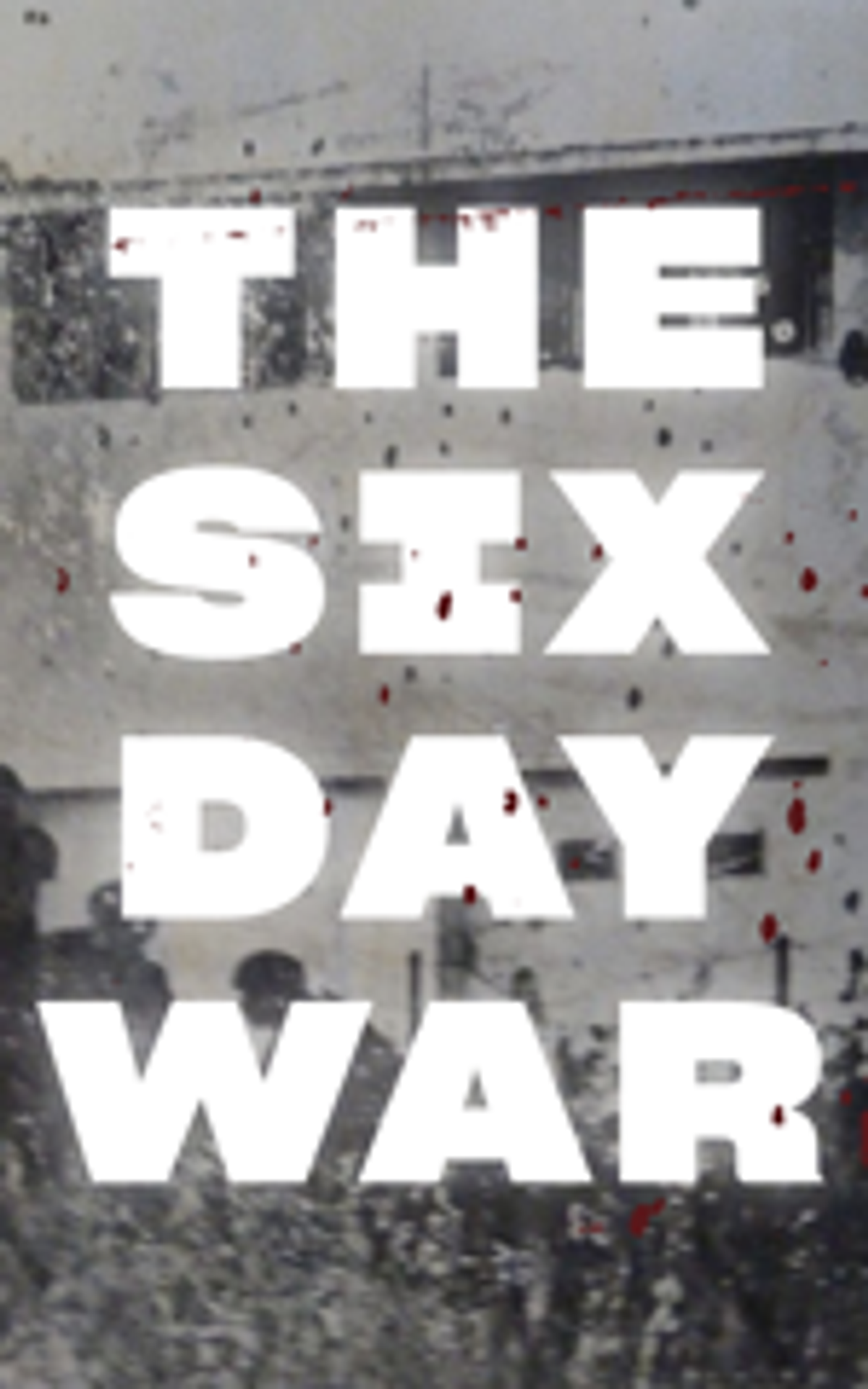Baruch Marzel: An Introduction to an Extremist
The Six-Day War: A documentary film that allows a Jewish extremist to air his views unchallenged depicts something unimaginable before 1967—religious Jewish Zionist settlers living in the West Bank




I made this film about Baruch Marzel during graduate school. While in the process of getting a doctorate in anthropology, I binge-watched the Errol Morris series First Person, a show that ran on Showtime from 2000-01. Each episode of the series focuses on an individual with an interesting life story like Murray Richman, a lawyer to the mob, or Joan Dougherty, a woman who cleans up crime scenes. I really liked this form, just 30 or 60 minutes in the mind of another person, a chance to think about the world through another person’s views. I decided I wanted to try it myself. And I knew a perfect subject.
Baruch Marzel is one of the most prominent members of the Jewish community in Hebron, the only Jewish community in the West Bank that sits inside a predominantly Palestinian city. He served as a parliamentary aide for Rabbi Meir Kahane, one of the godfathers of the Israeli hard right. After Kahane was assassinated in New York City in 1990, Marzel became one of the leaders of Kach, Kahane’s political party, which he led for almost five years until the time of the Baruch Goldstein massacre, at which point the group was banned by the Israeli government. A few years later, the U.S. State Department designated Kach as a terrorist organization.

These days, Marzel can best be described as community organizer. He helps run community events and the Jewish guest house in Hebron. He also organizes protests related to political and cultural issues, as can be seen in this video of him protesting Jerusalem’s gay pride march by walking around with a donkey.
While the American and Israeli governments consider Marzel to be a violent threat, he was always something else to me: a distant cousin, with a shared great grandparent. I met him for the first time in 1994 when my family visited Hebron, and I spent a Shabbat with him and his family in a neighboring trailer that belonged to a rabbi who had been stabbed to death there months earlier. There were a bunch of weekend visitors staying there with me, one of whom asked the group on Shabbat afternoon if anyone wanted to pepper-spray some Arabs.
Marzel interested me because he represented a form of muscular Judaism that celebrates Jewish power. In the version of Jewish history I got as a kid, Jews were permitted to be rebellious and violent until in the second century when the Romans squashed us, after which we enjoyed 18 centuries of having our behinds kicked. Against that backdrop, Marzel’s political views and his comfort with violence seemed fascinating to me. I also felt that Marzel’s story was interesting on a broader level, not just for what it represented vis-a-vis Judaism but for what it could say about political radicalism.
On an objective level, Baruch Marzel is an extremist, someone whose views are to the far side of the political spectrum. The title of the film is in fact based on a Kahane quote. I see this film as a meditation on fundamentalism, 22 minutes inside the mind of a man who sees black and white where most people see at least a touch of gray.
Marzel didn’t know I had come to Israel just to make a film about him, and when I told him about the idea, he was deeply skeptical. Unlike most documentary subjects I have filmed, he seemed genuinely uninterested in the project and didn’t feel flattered to have a camera around him. He reluctantly agreed, and all he wanted was for me to be unobtrusive and to not be a pest.
To say the film’s aesthetics and content owe a great deal to Errol Morris would be an understatement. Imitation is the sincerest form of flattery, and I essentially tried to make, with some modifications, my own episode of First Person about Baruch.
Perhaps the most celebrated part of Morris’ aesthetic is the way his subjects make direct eye contact with the viewer, a choice that differs from most network television and documentaries in which the subject looks off to the side, across the screen, toward the interviewer. I’ve never liked that convention, prefering instead the intimacy of Morris’ approach, which the filmmaker achieves through what he calls the Interrotron. Essentially, he and the subject are looking at each other through teleprompters placed over the camera, so that the subject is looking both directly at Morris but also at the viewer. Before leaving for the West Bank, I found someone to build me a version of Morris’ setup small enough I could carry it to Israel. During the actual interview, we are in the same room, but separated by a screen. We aren’t physically making direct eye contact.
I wasn’t interested in trying to portray a larger truth about the situation in Hebron or the Arab/Israeli conflict. I wasn’t trying to make a polemic that forced you to take a particular view of Marzel. I was interested in Baruch’s personal, very subjective truth. I wanted the viewer to have a chance to experience the world from his point of view, to see how a zealot lives and breathes in the world.
The first time I publicly screened a cut of The Radical Jew was at an academic conference, where it showed with another movie by a Belgian filmmaker who was Skyping into the proceedings from Europe. During the following Q&A, the other filmmaker, talking from a large screen looming over me, lambasted me for reproducing Marzel’s highly problematic and racist ideology. I’ve never entirely understood that attack, which I’ve heard since and which appears to be premised on the idea that “I can see that the person in this film is a dangerous character, but I’m not sure others can.” Why should anyone assume that others don’t see it the same way?
The best compliment I received on the film came from a Yemeni friend. He watched it and told me, “It sounds exactly like someone from al-Qaida.” I took that to mean I have captured a snapshot of militancy, of how one approaches life from an uncompromising position, and that’s all I tried to achieve. To me, the key line in the film is when Marzel says, “99 percent truth is 100 percent lie.” He lives by that dictum.
How should you, the viewer, feel about that? Well, that’s up to you to decide:
***
This article is part of a Tablet series on the consequences of The Six-Day War, which began on June 5, 1967.
Noam Osband is a documentary filmmaker, musician, and educator.